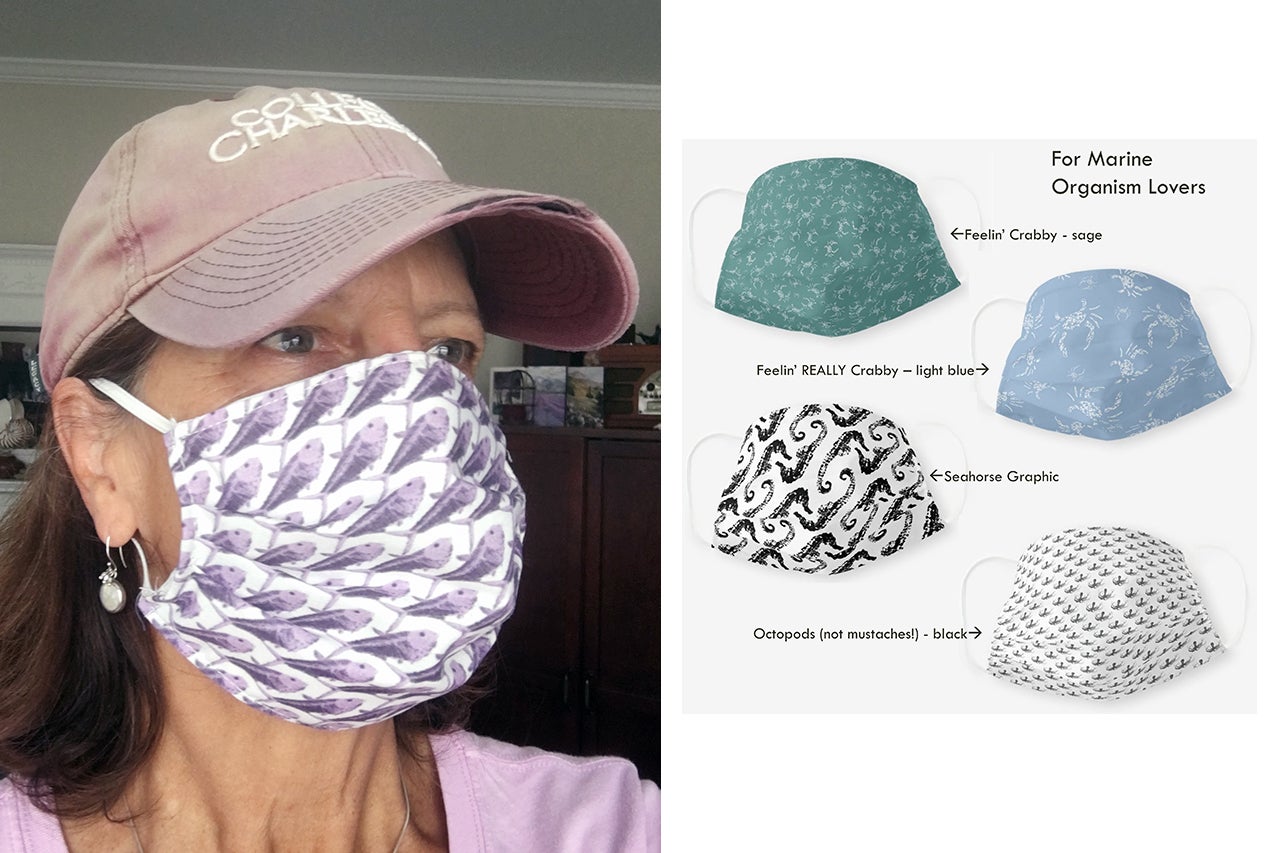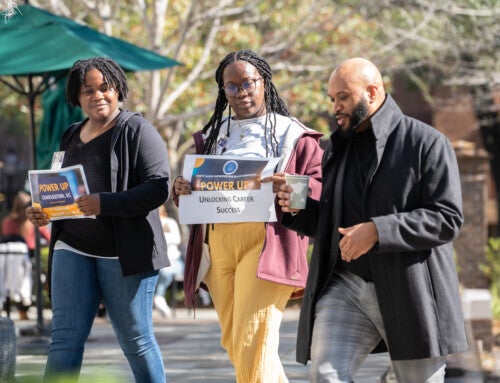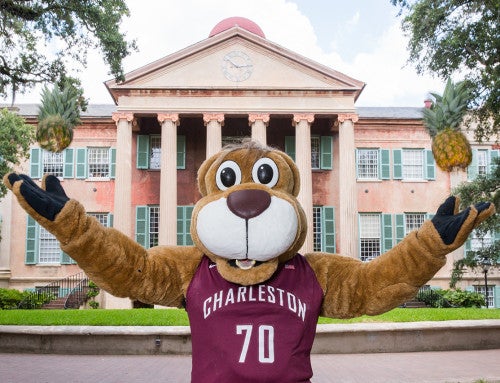College of Charleston marine geologist Leslie “Doc” Sautter doesn’t consider herself an artist.
“I’m more of a craftsperson,” she says of the prints she creates for her small business Oceanica Designs, which is the culmination of her lifelong passion for the sea. The designs include prints of marine organisms such as fish, octopuses, starfish and blue crabs featured on blankets, totes, coffee mugs, coasters and pillows. Now she’s making double-layered cloth face masks with her marine-inspired designs to raise funds for CofC students.
In early June, Sautter sold over 400 masks, raising more than $2500, split between the Geology Alumni Endowed Award and the Mace Brown Museum of Natural History.
“These funds will be used to support undergraduate student research and fieldwork,” Sautter explains.
For a second round of mask orders, Sautter will donate $5 from the sale of each mask to further support the same groups, along with the CofC BEAMS (BEnthic Acoustic Mapping and Survey) Program. To view the masks and see the pricing, go here. After selecting a mask design, orders may be placed by emailing Sautter at [email protected] before July 10. Masks will be available for pickup on campus after Aug. 15. They can be shipped for an additional cost.
Sautter, who has been teaching in the Department of Geology and Environmental Geosciences for more than 25 years, had planned on taking a group of students to the U.S. Virgin Islands this summer to map the seafloor. But when the College shifted to online instruction due to the coronavirus pandemic, she refocused her energies and launched the series of cloth face masks featuring designs such as trigger fish, sea horses and flying fish. An additional set of mask prints featured multicolor images of the seafloor generated by students in the College’s BEAMS Program through multi-beam sonar data collected off the southeastern coast of the United States.
The BEAMS Program is a seafloor mapping initiative that Sautter began in 2007. It is part of Project Oceanica, which she founded in 2001. Project Oceanica integrates education with oceanographic research and at-sea exploration, as well as develops educational resources and programs for undergraduate students, high school students and K-12 educators. Sautter says the inspiration for her business, Oceanica Designs, came when she was teaching marine science to elementary, middle and high school teachers. She learned and demonstrated the fish-printing technique “Gyotaku,” a traditional Japanese art form, as a tool to help students understand fish morphology.
“I got pretty good at it after teaching so many workshops and wanted to figure out another way to use the designs,” she says.
The actual process involves painting an organism such as an octopus or a triggerfish, pressing muslin or paper on top of the painted creature and then scanning the printed image. Sautter notes that all animals are donated by fishermen and seafood stores. One exception is the flying fish used for the print “Flight School.” The fish literally flew out of the water and landed on the deck of a research vessel off the Georgia coast in the middle of the night. Sautter notes, “Sadly he died, but is now immortalized in ink using Gyotaku!”
Sautter also creates unique designs from photographs of her fish fossil collection – some of which date to more than 50 million years ago. Some of the designs sport collages of the tiny microfossils called foraminifera that Sautter has studied to examine climate change. She uses these artistic collages in her marine geology courses.
“Leslie cares deeply for her students. The BEAMS program has done so well that 100 percent of graduates who seek it find a job in the field,” says Tim Callahan, professor and chair of the Department of Geology and Environmental Geosciences. “The courses for BEAMS lead to a capstone research project and Leslie has arranged through several funding sources to get the students on research vessels where they put their knowledge to use and add skills by collecting and interpreting their own seafloor data in real time. Leslie is an excellent teacher and is dedicated to student success – not just in the classroom, but in life.”
While it’s been good to have extra time to devote to her crafty business, Sautter is looking forward to seeing her students and getting back to the classroom this fall.
“Interacting and working with students in the classroom, at sea, in the field and in the lab are the reasons I love teaching so much. Recording lectures and seeing thumbnails of students who I haven’t yet gotten to know is a new challenge, no question,” she says. “I’m glad we’ll be able to see each other face to face (albeit behind fashionable masks!), and I just hope that we’ll be able to get back to some normalcy soon. I’m dying to take students on beach field trips and to conferences again – and of course we still have to map the seafloor of the U.S. Virgin Islands!”






